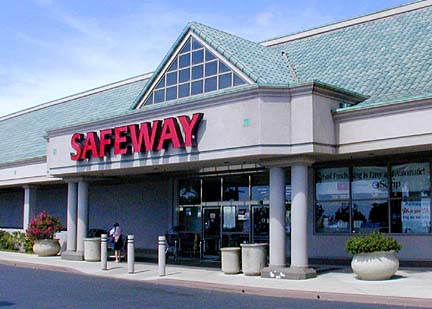

Why is Safeway called Safeway?
Walk into most any Safeway store today and you can pay for your groceries by tapping or swiping your Visa or Mastercard.
But if you do, did you know you are disregarding the intent of the company’s name?
Yep, that’s right. Safeway, which some think was founded in 1912 by Sam Seelig (more on that later) who started with a single store in Los Angeles, is a product of fiscally conservative thinking that was not exactly in abundance in the years before the Great Depression. When Seelig left in 1924, the company held a contest to find a new name. The name Safeway is part of a larger slogan “Drive the Safeway; buy the Safeway”. It refers to the fact that the store did not offer credit. Buying the “safe way” meant not using credit, or getting into debt.
Who is the founder of Safeway?
Now, about the history, there is some confusion about who founded Safeway, as the company has a complicated history with a series of mergers and acquisitions. However, the person most commonly credited with founding Safeway is Marion Barton Skaggs.
Sam Seelig was an early investor in the company and served as Safeway’s first president. He was instrumental in the company’s early success and growth, but Skaggs is generally considered to be the founder of the company.
It’s worth noting that Safeway’s history is complex, with the company undergoing multiple name changes, mergers, and acquisitions over the years. However, Skaggs is widely recognized as the visionary who founded the company and laid the foundation for its early success.
Skaggs was the son of a small town grocer and had a vision of creating a grocery store chain that offered high-quality products at low prices.
In the early years, Safeway grew rapidly, expanding across the western United States through a series of acquisitions and mergers. By the end of the 1920s, Safeway had more than 320 stores across the country.
During the Great Depression, Safeway struggled like many other businesses, but was able to survive by introducing new innovations, such as self-service and cash-and-carry shopping. The company also expanded into new areas, such as meat processing and dairy operations, which helped it to maintain its competitive edge.
In the post-World War II years, Safeway continued to grow, and by the 1950s, it was the largest grocery store chain in the United States. During this time, the company also introduced new technologies, such as computerized inventory management systems and electronic checkout scanners.
In the 1980s and 1990s, Safeway underwent significant changes, including the sale of some of its non-grocery business units and the acquisition of other grocery chains. The company also expanded into international markets, such as Canada and the United Kingdom.
Today, Safeway is a subsidiary of Albertsons Companies, which acquired the company in 2015. Safeway continues to operate as a popular grocery store chain, with more than 1,300 stores across the United States.
Another name synonymous with the depression and financial conservatism is part of Safeway’s history. Charles Merrill, founder of Merrill Lynch, IPO’d Safeway in 1927 at $226 a share. Merrill later left his eponymous firm to work more closely with the burgeoning grocery giant. Before the depression, he had pleaded with then president Calvin Coolidge to warn against rampant speculation in the markets.
Merrill himself had sold most of his holdings in the years and months prior to 1929, but not Safeway, which had embarked on a massive rollup strategy, acquiring hundreds of “mom and pop” grocers and smaller chains.
Today, with sales of more than $30-billion, Safeway is the 11th largest retailer in the United States. The company operates 217 stores in Western Canada and six in Ontario, and has 1418 stores in the U.S.
Safeway’s history in Canada
Safeway has a long history in Canada, dating back to 1929 when the first Canadian Safeway store was opened in Vancouver, British Columbia. The company’s expansion into Canada was part of a larger strategy to grow its business beyond the United States.
In the early years, Safeway Canada operated as a subsidiary of Safeway’s American operations. However, in 1961, Safeway Canada was established as a separate company, with its headquarters in Calgary, Alberta.
Throughout the 1960s and 1970s, Safeway Canada grew rapidly, expanding into new markets and opening new stores. The company’s success was due in part to its innovative marketing strategies, such as introducing the first grocery store loyalty program in Canada in the 1960s.
In the 1980s and 1990s, Safeway Canada continued to grow through a series of acquisitions and mergers. In 1995, Safeway Canada merged with the Canadian grocery store chain, Canada Safeway Limited, which had been operating in Canada since the 1920s.
Following the merger, Safeway Canada continued to expand, opening new stores and introducing new products and services. In 2013, Safeway Canada was acquired by Sobeys Inc., a Canadian grocery store chain, and Safeway stores in Canada were rebranded as Sobeys stores.
Today, Sobeys operates more than 1,500 stores across Canada, including the former Safeway locations. Although the Safeway brand is no longer in use in Canada, the legacy of Safeway’s innovative marketing and commitment to customer service continues to influence the Canadian grocery store industry.
_
Leave a Reply
You must be logged in to post a comment.



 Share
Share Tweet
Tweet Share
Share




Comment